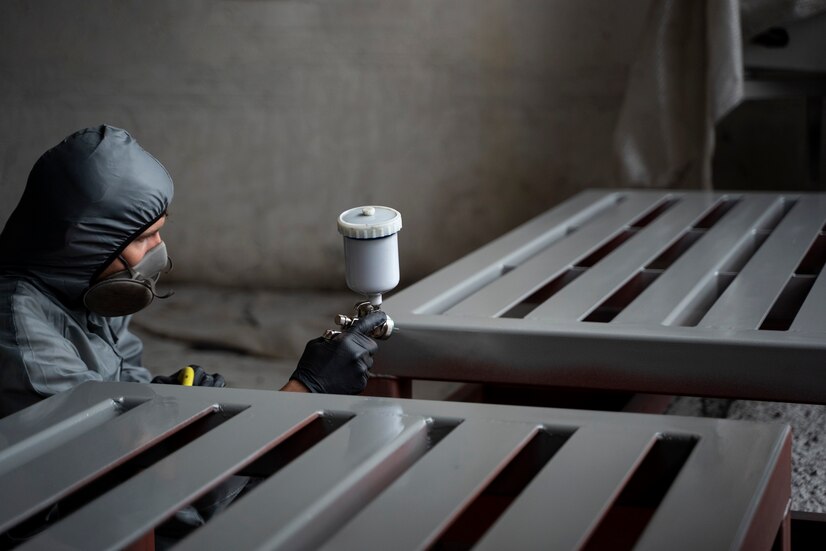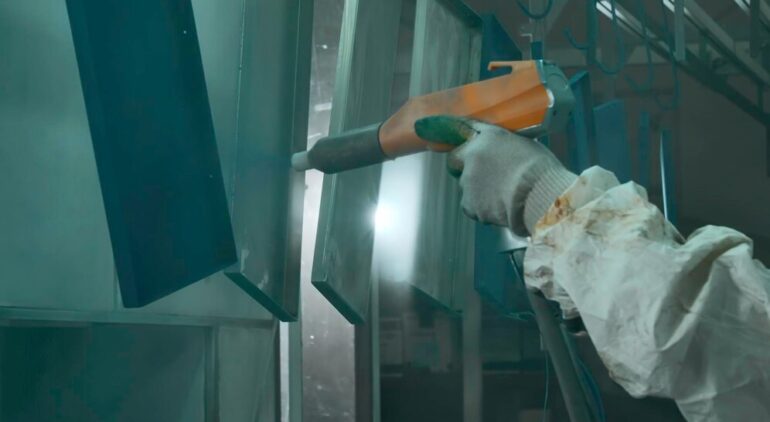What are the best reasons you must prefer powder coating for aluminium doors and windows?
Aluminium is a metal that finds various applications in different genres. It is one of the versatile metals that find application in various construction units, as well as other genres. Aluminium is widely used to make durable doors and window frames. After shaping the frames for the doors and windows, the aluminium powder coating is used on its surface to prevent corrosion and damage. The first procedure for transforming aluminium into a usable product is the extrusion. Extrusion involves shaping aluminium by making it flow through an opening to form an elongated material. Then, they are cut and shaped into desired pieces as per requirement.
Some Facts about Powder Coating

Powder coating is one of the methods applied to protect aluminium from damage and corrosion, especially in doors and windows. It is better than conventional methods of applying liquid paint on the surface. This is because there is no requirement for an extra solvent medium to bind the fillers. Powder coating in aluminium not only gives a protective coating but also gives a unique finish to the surface. The aluminium used in making frames of doors and windows finds its way into a booth, where charged powders are sprayed on the surface, forming a uniform coat.
Reasons for Choosing Powder Coating for Aluminium Doors and Windows

- Resistance to Damage and Corrosion– Most of the doors and windows in the buildings are exposed to climate change each day. It endures scorching heat, rain, strong winds studded with dust particles, storms, etc. All these factors increase the chances of the aluminium doors and windows facing corrosion and damage. However, powder coating on its surface will give exceptional protection and form a barrier against extreme climate conditions. The powder mixed with resin on the aluminium surface prevents it from corrosion by preventing water from reacting with the layer. The powder layer prevents moisture and heat-related degradation of the aluminium-made outdoor doors and windows. The powder coating layer also does not come off easily, thus giving them a long life.
- Versatility and Customization– One of the reasons why most people choose powder coating on aluminium doors and windows is versatility. Spraying a layer of powder on aluminium gives an extra finish with a hint of colours and even textures. You can try out many such options, and this gives you an opportunity for your preferred duration and customization. A layer of powder sprayed on aluminium doors and windows can be simply white or transparent, giving you an exclusive modern look to your doors and windows. You can also give a wooden finish or stone structure to such aluminium doors and windows as you choose.
- Flawless Appeal– Powder coating on aluminium provides a professional touch to the doors and windows. A powder contains particles of uniform surface area; it settles on the surface of the metal with precision and uniformity and gives a continuous smooth appearance.
- Eco-friendly– There are certain harmful chemicals found in liquid paints that pose threats to humans as well as the environment. However, the powder coating, when used, does not contain any solvent medium for binding and is therefore considered safe for use. It generates less amount of waste. The by-products formed after powder coating can easily be recycled and reused for a sustainable and clean environment.
- Low Maintenance– Powder coating aluminium on doors and windows makes them resistant to chemical and environmental damage. It also protects such doors and windows from minor scratches to wear and tear. This makes such windows and doors retain their look for long. They can be the perfect choice for homes that are exposed to dust and harsh conditions, as they have low maintenance costs and help save money.
- High Efficacy and Low Labour Cost– The application process of powder coating on aluminium is smooth and efficient. It gives maximum coverage in less time, thus reducing the additional cost of labour. It also helps in long-term cost management as the powder-coated aluminium doors and windows offer more durability. The high-finish colours and textures give an innovative touch to the doors and windows without the requirement of expensive products.
Powder Coating Aluminium as a Process

- Washing the Metal Surface– Firstly, a strong chemical solution is used to clean the aluminium metal to clean unwanted material from its surface. The presence of dust particles on the surface may cause an uneven coating.
- Powder Spraying– A special gun-like material is used to spray the powder on the surface of the aluminium metal. As we know, aluminium metal has a positive charge on it, so the charge difference between the metal surface and the powder helps the powder attach well to the surface and form a coating.
- Final Heating– After forming the powder coating on the surface of aluminium doors and windows, high temperatures are used to permanently fix the powder spray on the metal surface for a long time. It increases the life of the doors and windows made with aluminium. Experts also look for any defects in the material after this. If they find any defect in the powder coating, they will remove such defects and send the material to the customer after packaging.
- Materials of the Spray– The powder spray contains various metallic and organic components that are unique for each type of powder spray. It gives a unique colour and finish to the metal. The powder coating on aluminium has properties like heat and corrosion resistance. They also give durability and flexibility to the doors and windows coated with such powder spray.
Powder coating on aluminium windows and doors is widely gaining popularity worldwide. Recent developments are encouraging more powder spraying technologies to be used in making aluminium doors and windows. However, proper examination of the quality of the powder spray on the metal surface should be done to prevent degradation in the near future. If low-quality products are used, it may cause the powder layer to chip off and expose the metal surface, causing damage to the material.




